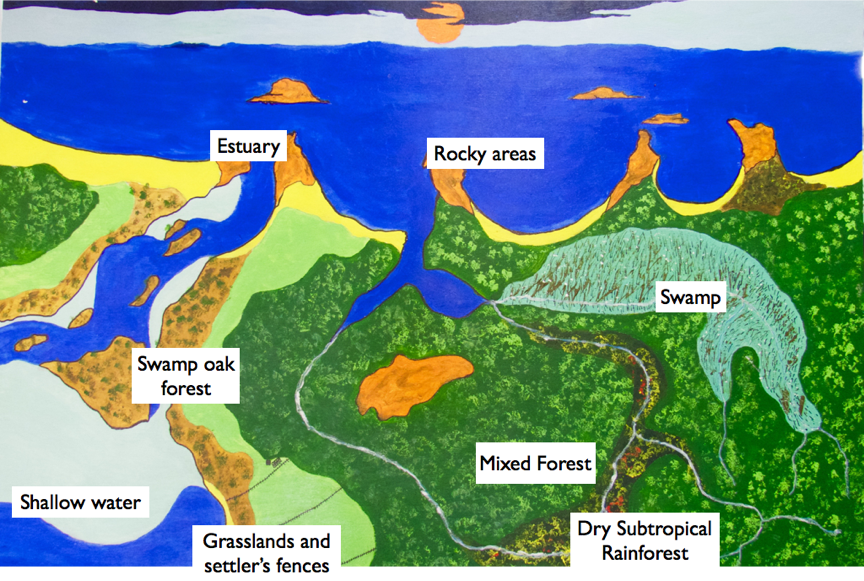Tony Hepworth, with:
- Financial assistance from Shellharbour City Council (Small Environment Grant) and Landcare Illawarra
- Lots of help and advice from lots of friends, with special mention of Simon Tedder – Office of Environment and Heritage, and A/Prof Laurie Chisholm – University of Wollongong
- Students at Lake Illawarra Public who helped in the trials
has produced a Landcare Resource for teachers and is more than happy to share it around.
The resource begins with an area of land, anywhere along our coast.

We then add to it a number of native animals, plants, and a plant community as well as Aboriginal heritage.
Students have briefing sheets on each of these and can either use the briefing sheets as they are, or use them to take the study further into our natural and cultural heritage.
The choice of how far to take the study is left to the teacher.

Next, development start to take place and all too quickly the natural and cultural heritage is overrun with the building and services of civilisation. Great for us, but not so great for the species and history that has been displaced and destroyed.

To get to this point where a Year 4 / 5 / 6 would be able to draw conclusions about how quickly, and how permanently, development can overtake the environment, would take about 4 or 5 weeks.
There are 50 slides which take the class to this point and then another slide that asks:
What are you doing for our future together?
which challenges the class to take some kind of positive action for the environment.
All the materials for this Landcare Resource are available free of charge and come in Word, PowerPoint, Keynote and PDF. The advantage of the first 3 files is that teachers can edit the resource and make any changes that will better suit their students.
Contact Tony Hepworth, thepworth@optusnet.com.au, for further information.
More advanced classes, up to say Year 10, could then take a few more weeks to investigate how it is not just animal and plant species, as well as cultural heritage, that gets swept aside, but also ecosystem services.

